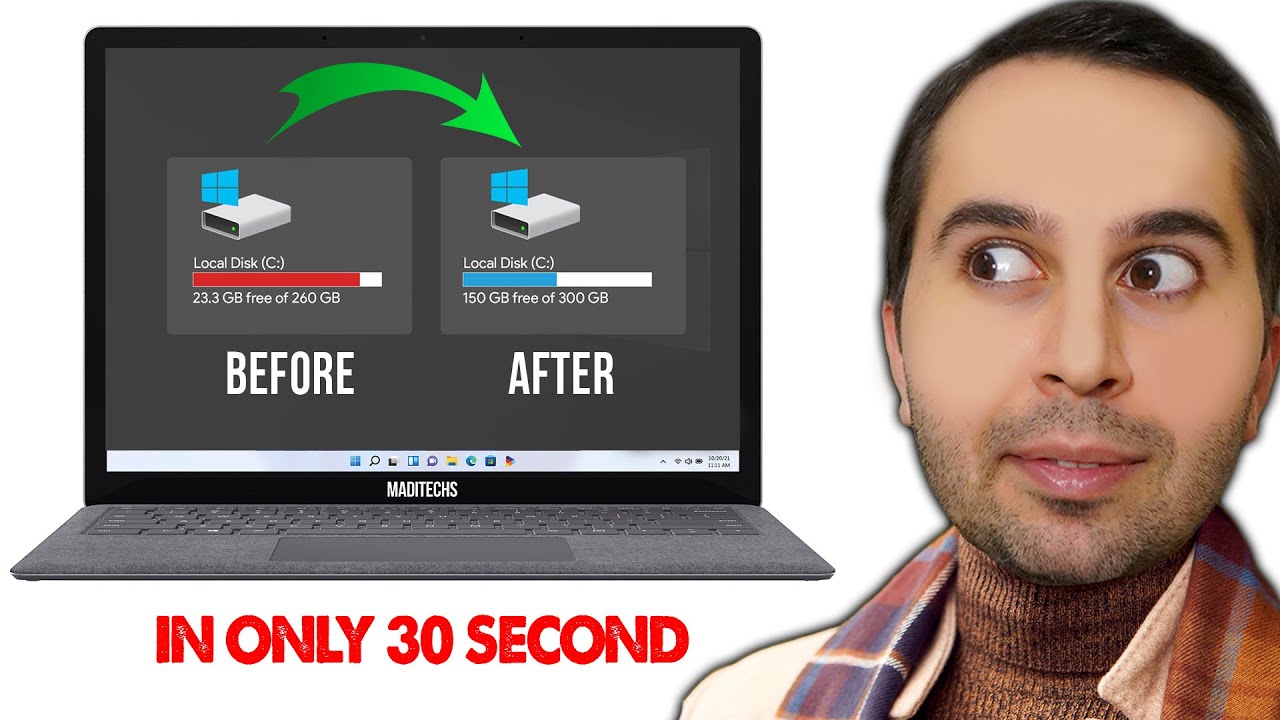Are you tired of waiting for your YouTube videos to buffer or lag? If you’re like many users, you might not realize that a cluttered device can significantly slow down your streaming experience. In this post, we’ll explore how freeing up space on your device can lead to smoother YouTube performance. Let's dive into the reasons behind storage issues and how they affect your favorite video platform!
Understanding Storage Issues with YouTube

When it comes to watching YouTube, storage might not be the first thing that comes to mind. However, inadequate storage can be a sneaky culprit behind poor performance. Here’s how storage issues can affect your YouTube experience:
- Buffering Problems: When your device is low on storage, it struggles to effectively cache videos. This leads to longer buffering times, making you wait to watch that must-see clip.
- App Performance: Apps, including YouTube, require a certain amount of free space to function optimally. If there’s not enough room, the app may crash or respond slowly.
- Quality Issues: Limited storage can result in a drop in video quality. YouTube might automatically lower the resolution to reduce the demand on your device.
So, what causes these storage issues? Well, here are some common factors:
- Downloaded Content: If you’ve downloaded videos for offline viewing, these files can take up significant space. While it's great for traveling or areas with poor connectivity, they can quickly eat up your storage.
- Cache Files: YouTube stores cache files to speed up loading times. However, over time, these can accumulate and consume valuable space.
- Other Apps and Media: Your device likely houses numerous apps, photos, and videos that collectively fill up storage. Sometimes, it’s not just YouTube causing the slowdown.
Identifying these storage issues is the first step to a better YouTube experience. Regularly checking your available space can make a world of difference. If you notice your device is running low, it’s time to take action and clean house. By understanding how storage impacts performance, you can keep your YouTube experience smooth and enjoyable!
Also Read This: How to Upload an Unlisted YouTube Video from iPhone: Step-by-Step Process
3. Identifying What Takes Up Space on Your Device
Before you can start freeing up space on your device for a smoother YouTube experience, it’s essential to know exactly what’s hogging all that precious storage. Most devices come with built-in tools to help you identify space consumption, but let’s break it down in a more straightforward way.
First off, consider checking the following categories:
- Apps: Some apps, especially games and social media, can take up significant storage over time due to cached data.
- Photos and Videos: High-resolution images and videos can quickly eat up space. A single 4K video can be several gigabytes!
- Music and Podcasts: Downloaded playlists or episodes can accumulate, especially if you’re a music lover.
- Documents: PDFs, presentations, and other documents can also take up space, particularly if you frequently download or store files directly on your device.
- System Files: Your operating system and built-in apps might take up a surprising amount of space, too.
To easily identify these factors:
- For Android: Go to Settings > Storage. Here, you’ll get a detailed breakdown of what's consuming space.
- For iOS: Head over to Settings > General > iPhone Storage to see a list of apps and their storage usage.
By identifying these storage hogs, you can make informed decisions about what to keep and what to remove. Remember, it’s not just about freeing up space; it’s about optimizing your device for a better YouTube experience!
Also Read This: How to Create Chapters for Your YouTube Video in 2023
4. Methods to Free Up Space for YouTube
Once you’ve identified the culprits taking up your device’s space, it’s time to roll up your sleeves and start freeing up that space! Here are some effective methods you can use:
- Delete Unused Apps: If you haven’t used an app in months, it’s likely time to let it go. Go through your apps and uninstall those that aren’t serving you.
- Optimize Photos: Use cloud storage solutions like Google Photos or iCloud to back up your images and delete the originals from your device. If you’re an iPhone user, consider enabling Optimize iPhone Storage to keep only smaller versions of photos on your device.
- Clear App Cache: Many apps store cached data to load faster. Go into your app settings and clear the cache regularly. For example, in YouTube, you can clear cache through your device settings under apps.
- Manage Downloads: Check your YouTube app for any downloaded videos you no longer need. Delete them to free up space while enjoying offline viewing.
- Use Streaming Instead of Downloads: Whenever possible, opt to stream rather than download videos. This way, you won't use up any space for local storage.
Implementing these methods can significantly improve the performance of your YouTube app, ensuring smooth playback and a better overall experience. Remember, a little maintenance goes a long way!
Also Read This: Does YouTube TV Have Fubo? Comparing YouTube TV with Fubo TV’s Features and Channels
5. Clearing Cache and Data on Your Device
If you’ve noticed that your YouTube app is acting sluggish, one of the first things you should consider is clearing the cache and data on your device. Over time, apps accumulate data that can bog down performance, making videos buffer longer and loading times frustratingly slow.
So, how do you clear cache and data? Here’s a simple step-by-step guide for both Android and iOS devices:
- For Android:
- Open your device's Settings.
- Scroll down and tap on Apps or Application Manager.
- Find and select YouTube.
- Tap on Storage.
- Here, you’ll see options to Clear Cache and Clear Data. Start with Clear Cache.
- For iOS:
- Go to your Settings.
- Scroll down and tap on YouTube.
- Tap Clear History to remove any stored data. (iOS doesn’t allow you to clear cache directly, but clearing history helps.)
Once you’ve completed these steps, you’ll notice a significant boost in performance. By regularly clearing cache and data, you’re essentially giving your device a fresh start and ensuring that YouTube can run optimally. It’s a small step that can lead to a smoother experience, especially during those intense binge-watching weekends!
Also Read This: Can Alexa Connect to YouTube Music? All You Need to Know
6. Removing Unused Apps and Media Files
Let’s face it: our devices often end up cluttered with unused apps and media files that we rarely touch. If you want to free up space and enhance YouTube performance, it’s time to do a little digital spring cleaning!
Start by reviewing your apps. Ask yourself, “When was the last time I used this?” If the answer is more than a few months, it’s probably safe to remove it. Here’s how to efficiently delete apps:
- On Android:
- Open the App Drawer.
- Press and hold the app you want to uninstall.
- Drag it to the Uninstall option that appears at the top or select Remove.
- On iOS:
- Find the app on your home screen.
- Press and hold the app icon until it jiggles.
- Tap the X in the corner of the app you want to delete.
Next up, let’s tackle those media files. Photos, videos, and downloads can take up a surprising amount of space. Here’s how to identify and remove unnecessary files:
- Check your Photos app for duplicates or blurry images.
- Delete movies or shows you’ve downloaded but have already watched.
- Look in your Downloads folder for files you no longer need.
By removing these unused apps and media files, you’ll not only free up valuable space but also improve your device’s performance across the board. It’s amazing how a little decluttering can lead to a smoother YouTube experience, allowing you to focus on what you love: watching those endless cat videos or the latest movie trailers!
Also Read This: Is NoteBurner YouTube Music Converter Safe to Use
7. Utilizing YouTube's Offline Feature Effectively
Did you know that YouTube allows you to download videos for offline viewing? This feature can be a game-changer, especially if you're dealing with limited storage space and want to enjoy seamless playback without interruptions. Here’s how to make the most of it!
Why Use Offline Downloads?
- Save Data: Watching downloaded videos means you're not using up your mobile data.
- Better Performance: Offline videos load faster since they’re stored locally on your device.
- Convenience: Perfect for long trips or areas with poor internet connectivity!
How to Download Videos:
- Open the YouTube app on your device.
- Find the video you want to download.
- Tap the Download button (it looks like a downward arrow).
- Select the video quality you prefer.
- Once downloaded, you can find it in the Library tab under Downloads.
Remember, not all videos are available for offline viewing due to content restrictions set by the uploader. So, keep this in mind as you browse and download!
Managing Your Downloads:
It’s important to keep an eye on your downloaded content. Regularly check the Downloads folder in your YouTube app to remove videos you’ve already watched. This will help you free up space for new content without having to delete other important files on your device. Plus, you can always re-download a video if you need it again!
8. Upgrading Your Storage Options
If you're constantly bumping into storage issues, it might be time to consider upgrading your storage options. Don’t let a limited amount of space ruin your YouTube experience!
External Storage Solutions:
- MicroSD Cards: If your device supports it, adding a microSD card can dramatically increase your storage capacity. It’s an affordable solution that lets you keep more apps and videos accessible.
- USB OTG Drives: For devices that support USB On-The-Go, consider investing in a USB OTG drive. This allows you to transfer files from your device to the USB drive easily and access movies or shows on the go.
Cloud Storage Options:
Cloud storage services like Google Drive, Dropbox, or iCloud are great for offloading some files. You can store videos, photos, and apps that you don’t need immediate access to in the cloud:
- Google Drive: Offers 15 GB for free and allows easy sharing and access across devices.
- Dropbox: A user-friendly option for storing files and collaborating with others.
- iCloud: Perfect for Apple users, seamlessly integrates with your devices.
Consider Upgrading Your Device:
Finally, if you frequently find yourself dealing with storage challenges, it might just be time for a device upgrade. Many newer smartphones and tablets come with significantly more storage capacity and better performance, allowing you to enjoy YouTube without the constant worry of running out of space.
In summary, whether it’s utilizing YouTube’s offline feature or exploring storage upgrades, there are plenty of strategies to enhance your YouTube experience while keeping your device running smoothly!
 admin
admin








